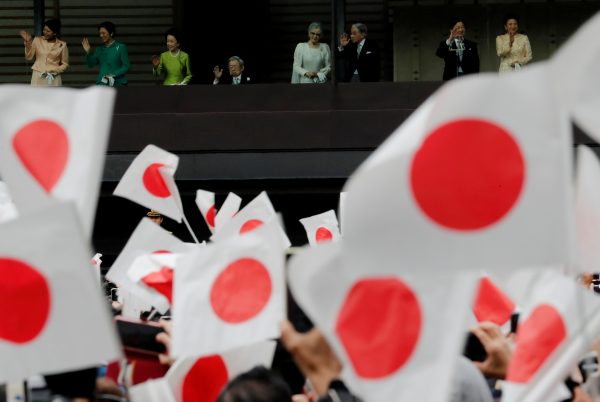The meeting was convened by then prime minister Yoshihide Suga, who is said to prioritise preserving the male line to the throne. Attendees opposed allowing an empress to take the throne as well as the idea of imperial succession from the matrilineal lineage. This stance was based on the belief that female succession would divide Japan and delegitimise the nature of the imperial system.
The current Imperial Household Law of 1947 relies on patrilineal lineage, allowing only sons to become emperor, and requiring female members to leave the Imperial Palace after they marry commoners. The expert meeting came up with a two pronged solution to the lack of male successors in the Japanese imperial family: the adoption of a male successor and allowing current female members to remain in the royal family after marriage to commoners so they can assist the emperor.
The adoption proposal is popular among conservative politicians. The adoptee would be selected from the 11 former imperial family branches, which were forced to leave the Imperial Household by the United States in 1947.
But the Japanese public is unlikely to be convinced that male succession must be preserved.
Conservatives see the unbroken male bloodline as imperative to the maintenance of the Japanese throne. They claim that an empress would make Japan’s imperial system illegitimate, and that the husband of a future empress could politically manipulate her to take over the entire imperial family.
These views reflect a misogynistic attitude, stereotyping women as incapable and unreliable. The commoner fiance of Princess Mako of Akishino, who was seen by many Japanese as unsuitable due to his family background, was introduced as an excuse for not having a female emperor.
In Meiji Japan, the adoption of a male child was common among the Kazoku, an elite class that existed from 1884 to 1947 immediately below the imperial lineage. Adoption was used as a means to continue the elite household — a form of patriarchal unity with a strong emphasis on the family name and property — while women were relegated to bearing heirs. Genealogical, biological, or genetic consistency between adopters and adoptees mattered very little for the Kazoku. Because of huge pressure from the nation and society to sustain the patriarchal house, they relied on less rule-bound types of adoptions, including buying a child from strangers or relying on suppliers from other noble houses.
Bringing back this archaic custom once used for the preservation of the patriarchal line would sacrifice Japan’s opportunity to further democratise the meaning of monarchy beyond political divisions and to enhance the support of the public, which is fundamental to the sustenance of monarchy in civil society.
Over 70 per cent of the Japanese public have expressed support for both a reigning empress and emperor of the matrilineal line. There is a large gap between the public’s expectations of a globally engaged royal family and the views of conservative traditionalists who insist that the imperial family obey traditional customs.
Conservative stances reflect the patriarchal hierarchy of 19th century Japan, in which women were obligated to serve their husbands’ families, and families were obliged to serve the state. The Meiji Civil Code defined wives as lacking competence and thus required them to depend on the consent of their husbands on legal matters.
Female sacrifice and ambivalence have characterised the Japanese imperial family for too long in post-war Japan. Empress Masako, the consort of the current Emperor, is a Harvard-educated former diplomat whose personal history and marital life mirrors the challenges and structural problems that ordinary Japanese women face. She represented hope for Japan to truly embrace women with professional achievements, but was instead marginalised as a reproductive being struggling with the pressure to bear a male child.
Japan, like so many other countries, consists of many dual-income families that embrace gender equality. As such, the story of female sacrifice in the imperial family needs to change.
The British royal family may offer lessons here. The Windsors, a US$28 billion royal family, exert a tremendous influence on society and annually contribute hundreds of millions of pounds to the United Kingdom’s economy. Members of the British royal family have referred to the institution as a firm, with the expectation that it must please the major stakeholders who support and pay for the business.
Similarly, the management of the Japanese imperial family must reflect the views of its largest stakeholders — the Japanese public. Public popularity and support are critical to the success of the monarchy. Opening the way for a woman to become emperor broadens the appeal of the imperial family, not just to Japanese people but also to the international community.
Much like Japan, the British monarchy faced the challenge of old succession laws, but responded deftly by amending those laws in 2013 so the first-born child of the monarch, regardless of gender, can succeed to the throne. Japan would benefit from a similar change.
Kumiko Nemoto is Professor of Management in the School of Business Administration at Senshu University, Tokyo.
This article appears in the most recent edition of East Asia Forum Quarterly, ‘Confronting crisis in Japan’, Vol 13, No 3.

